





Man has been fermenting foods for thousands of years, but what is fermentation? How does it preserve foods? Is it a safe and healthy means to store our harvest?
(Editor's Note: This article was orginally published on September 17, 2008. Your comments are welcome, but please be aware that authors of previously published articles may not be able to respond to your questions.)
The deliberate fermentation of foods by man predates written history and is possibly the oldest method of preserving perishable foods. Evidence suggests that fermented foods were consumed 7,000 years ago in Babylon.[1] Scientist speculate that our ancestors possibly discovered fermentation by accident and continued to use the process out of preference or necessity. Preserving by fermentation not only made foods available for future use, but more digestible and flavorful. The nutritional value produced by fermenting is another benefit of fermenting.
The study of fermentation is called zymology. You may, or may not, know the list of foods in our present culture that have been fermented for centuries, at some stage of production, to be made more edible and accessible to the human population (see the green information bar at right).
Fermentation is the controlled decay of material using special bacteria which results in a more desirable product. Technically, fermentation is the biochemical conversion of sugars, starches, or carbohydrates, into alcohol, and organic acids, by bacteria and enzymes.[1] We have symbiotic relations with some forms of bacteria, we give them what they need (carbohydrates), they give us what we need (preserving acids). The bacteria change foods into more digestible and nutritional material.
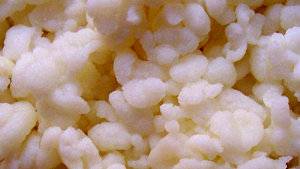
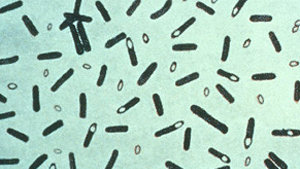 Lactobacillus (fermentation bacteria)
Clostridium botulinum (spoiling bacteria)
Lactobacillus (fermentation bacteria)
Clostridium botulinum (spoiling bacteria)
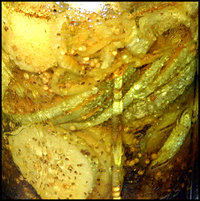
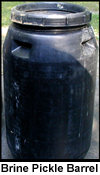
A “starter culture” containing the preferred bacteria is introduced to the foods to be fermented. This can be done by adding a small sampling from a previous batch of converted foods, or with a commercially distributed mixture. Some foods need the proper conditions to attract the desirable, or to discourage the bad, microbes.
Materials cured in a brine solution (salt, water, sometimes spices and sugar) are naturally fermented, or pickled. Although desirable anaerobic bacteria convert carbohydrates to acetic acid that “pickle” and preserves the food, the brine protects the vegetables from aerobic organisms.[2]
Pickling vegetables created with vinegar (fresh-pack, or quick-process method) are not naturally fermented. The acid of the vinegar preserves the food and imparts the flavors of the herbs, and spices used.[2] Vinegar does not ferment foods, but is a product of fermentation.
Bread is raised by the process of fermentation. Yeast eat the sugar, creates carbon-dioxide gas doubling the amount of food, and produces alcohol that is burned off in baking. Essene bread is made with fermented (sprouted) grain to improve nutrition and digestibility, and dried in a warm, low temperature environment.[3]
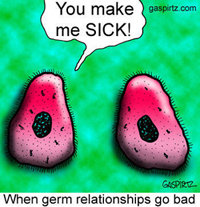 The desirable bacteria cause less deterioration of the food by inhibiting the growth of the spoiling types of bacteria. Some fermenting processes lower the pH of foods preventing harmful microorganisms to live with too acidic an environment. Controlled fermentation processes encourage the growth of good bacteria which starves, or fights off, the bad microbes. Depending on what is fermented, or the manner of fermentation, foods can remain consumable for years!
The desirable bacteria cause less deterioration of the food by inhibiting the growth of the spoiling types of bacteria. Some fermenting processes lower the pH of foods preventing harmful microorganisms to live with too acidic an environment. Controlled fermentation processes encourage the growth of good bacteria which starves, or fights off, the bad microbes. Depending on what is fermented, or the manner of fermentation, foods can remain consumable for years!
The fermentation process can be stopped by other means of preserving, such as, canning (heating), drying, or freezing. Heat (pasteurization, 145° F), and low temperatures (freezing, 32° F or below) stops the fermenting process by slowing, or killing, the preferred microorganisms, and other bacteria. A few undesirable bacteria are not killed by either means, and continue to grow. When the beneficial bacteria are gone, the unfavorable bacteria take over, growing exponentially! This causes rotting, disease, illness, and inedible foods. When the good guys are present and happy, the food remains edible.
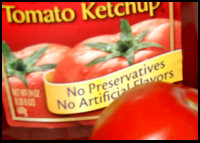
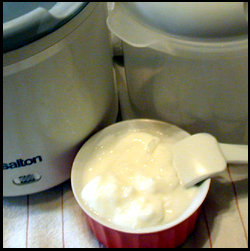 Fermenting enhances the flavors of some foods, as with the extended fermentation of black teas, aged cheese, wine, and beer, which creates their distinctive flavors. Cocoa beans have to be fermented (composted) for a few days to remove the pods and to enhance the flavor of chocolate.[4]
Fermenting enhances the flavors of some foods, as with the extended fermentation of black teas, aged cheese, wine, and beer, which creates their distinctive flavors. Cocoa beans have to be fermented (composted) for a few days to remove the pods and to enhance the flavor of chocolate.[4]
Fermenting makes foods more edible by changing chemical compounds, or predigesting, the foods for us. There are extreme examples of poisonous plants like cassava that are converted to edible products by fermenting. Some coffee beans are hulled by a wet fermenting process, as opposed to a dry process.[1]
Fermentation increases nutritional values with the biochemical exchange it produces, and allows us to live healthier lives. Here are a few examples:
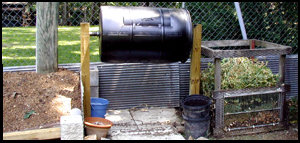
Fermentation is a part of nature that mankind learned to control for food preservation thousands of years ago. We are still discovering more uses and benefits of this natural process today.
Endnotes:
[1] Fermented Frutis and Vegetables: A Global Perspective. Battcock & Azam-Ali. FAO Agricultural Services Bulletin No. 134.
Food and Agriculture Organization of the United Nations Rome. 1998. ISBN 92-5-104226-8. www.fao.org/docrep/x0560e/x0560e00.htm
[2] Making Fermented Pickles and Sauerkraut. Schafer, William. University of Minnesota. 2008.
www.extension.umn.edu/distribution/nutrition/DJ1091.html
[3] Wild Fermentation. Katz, Sandor E. 2003. ISBN: 1-931498-23-7
[4] The Cocoa Web. www.cacaoweb.net/cacao-beans.html
[5] The Sprouting Book. Wigmore, Ann. 1986. ISBN: 0-89529-246-7
[6] Specific Carbohydrate Diet. www.pecanbread.com/new/home1.html
[7] The Vinegar Institute. www.versatilevinegar.org/
[8] The Whey to Renewable Energy. Greer, Diane. BioCycle. Feb 2008. www.jgpress.com/archives/_free/001579.html
Wiki Commons: Clostridium botulinum, Lactobacillus bulgaricus, Couple of Bacteria
All other photos belong to the author.
Copyright © www.100flowers.win Botanic Garden All Rights Reserved